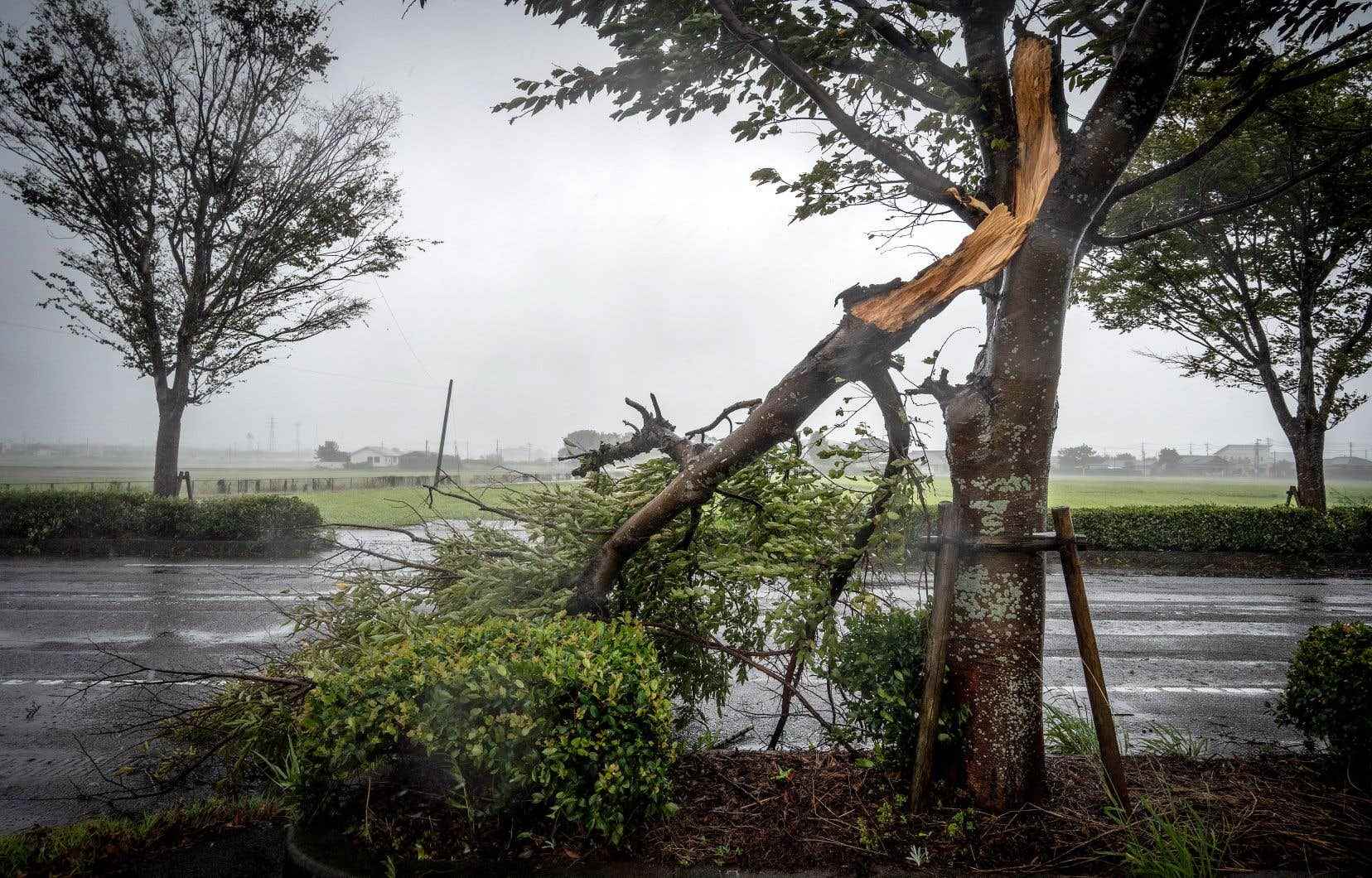The mighty typhoon Nanmadol reached the southwest coast of Japan on Sunday, as authorities advised millions of people to take shelter from strong winds and torrential rains.
“Eye of the Typhoon Nanmadol made landfall near the city of Kagoshima around 6 a.m. [heure côte est du Canada] said the Japan Meteorological Agency (JMA).
The typhoon caused gusts of up to 234 km / h and has already dumped up to 500 mm of rain in less than 24 hours on certain areas of the big island of Kyushu.
The JMA issued a “special warning” for Kagoshima and Miyazaki prefectures in southern Kyushu, where at least 20,000 people were preparing to spend the night in shelters.
State broadcaster NHK, which compiles information from local authorities, said more than seven million people had been urged to go to shelters or take shelter in sturdy buildings.
On Sunday, nearly 200,000 homes were already without power in the affected departments, while regional rail services, flights and ferry crossings were canceled, according to public companies and local transport companies.
Some grocery stores, usually open 24 hours a day, including during severe weather, have also closed.
“Visibility almost zero”
“The greatest caution is required,” said Ryuta Kurora, head of the JMA’s forecasting unit, on Saturday. “It is a very dangerous typhoon. »
“The wind will be so violent that some houses could collapse,” said Mr. Kurora, also warning of floods and landslides.
On the ground, a municipal official in Izumi (Kagoshima prefecture) said the weather conditions were deteriorating very rapidly.
“The wind has become extremely strong. The rain is also falling very hard,” he told Agence France-Presse. “Visibility is almost nil. »
On the coast, in the town of Minamata, fishing boats, moored for safety, floated on high waves, while driving rains sprinkled the promenade.
The typhoon, which weakened slightly as it approached Kyushu, is expected to head northeast and sweep through Japan’s main island of Honshu through Wednesday morning.
The typhoon season peaks from August to September in Japan where it is marked by heavy rains that can cause sudden floods and deadly landslides.
In 2019, the typhoon Hagibis fell on Japan in the middle of the Rugby World Cup, causing the death of more than 100 people.
A year earlier, the typhoon jebi led to the closure of Kansai airport in Osaka, killing 14 people.
And in 2018, floods and landslides killed more than 200 people in western Japan during the rainy season.
Scientists estimate that climate change is increasing the intensity of storms and extreme weather events.
